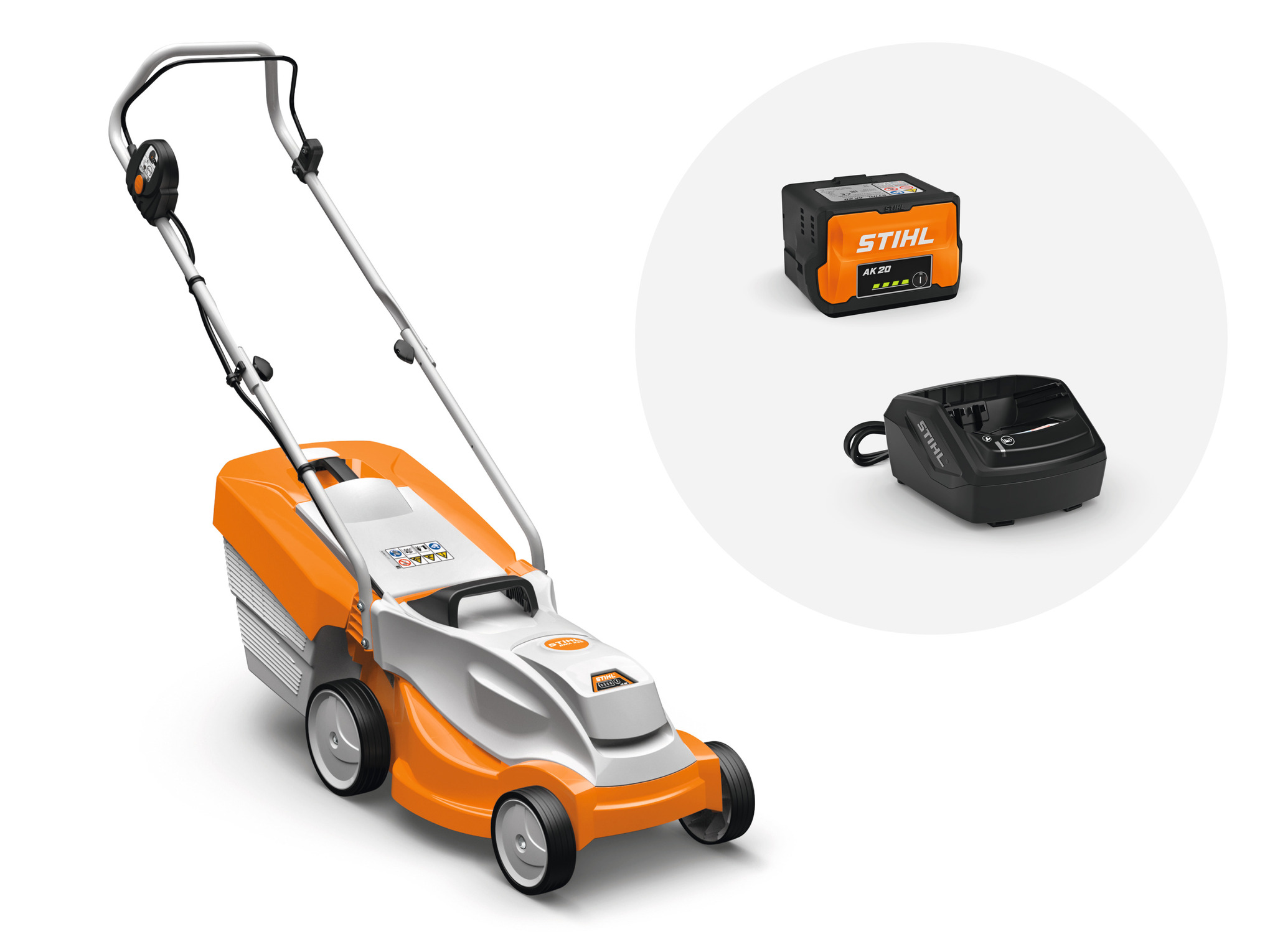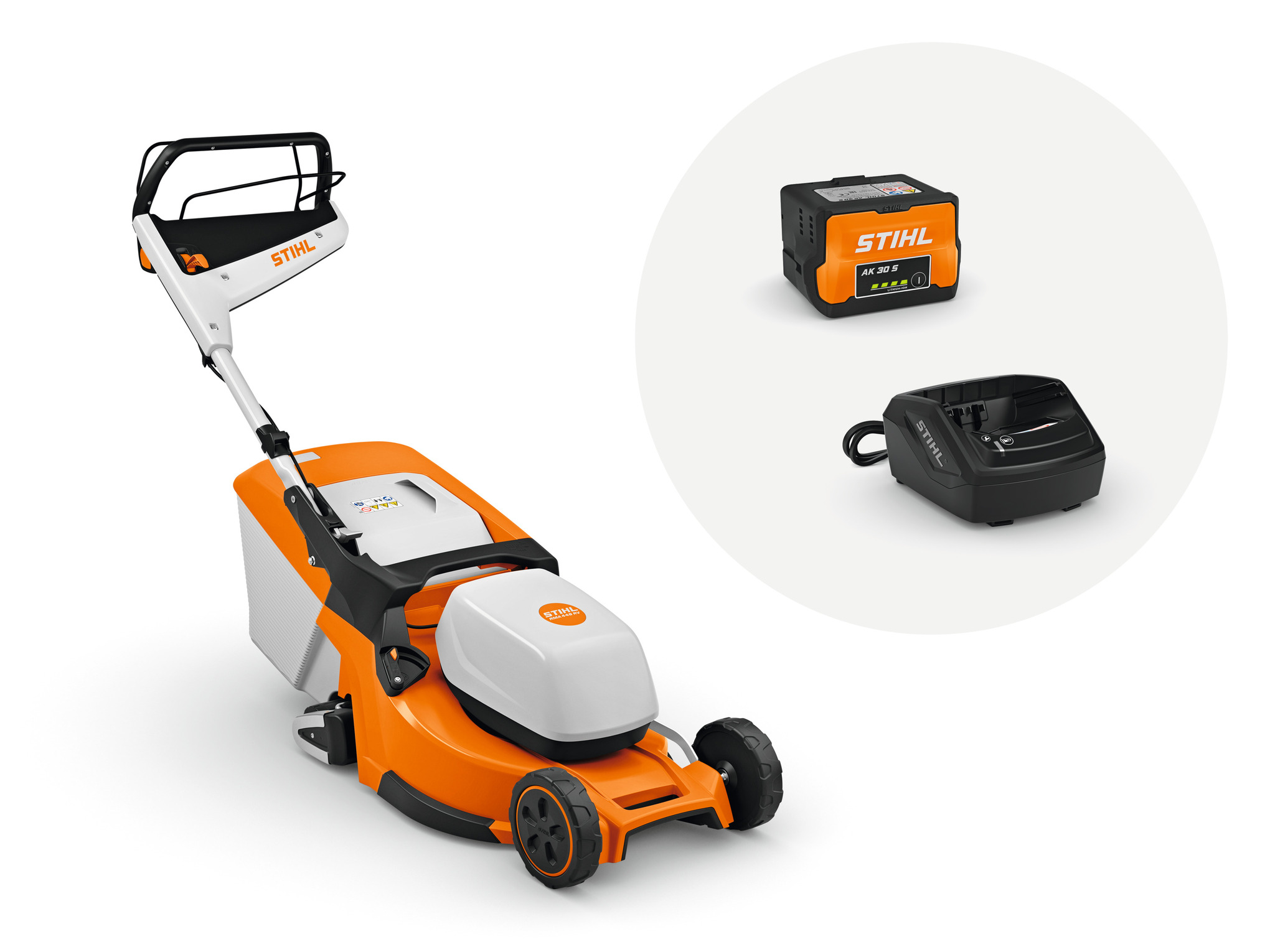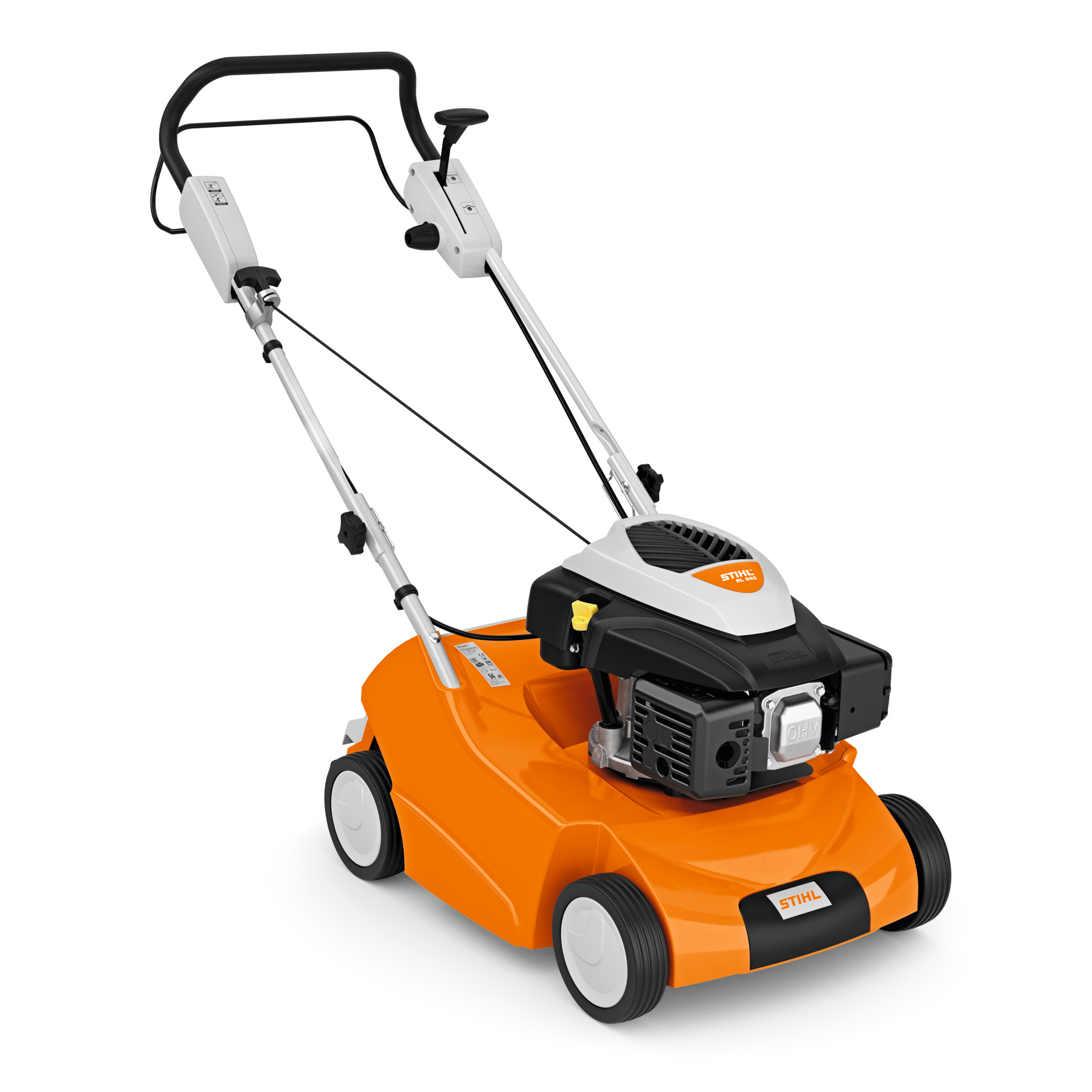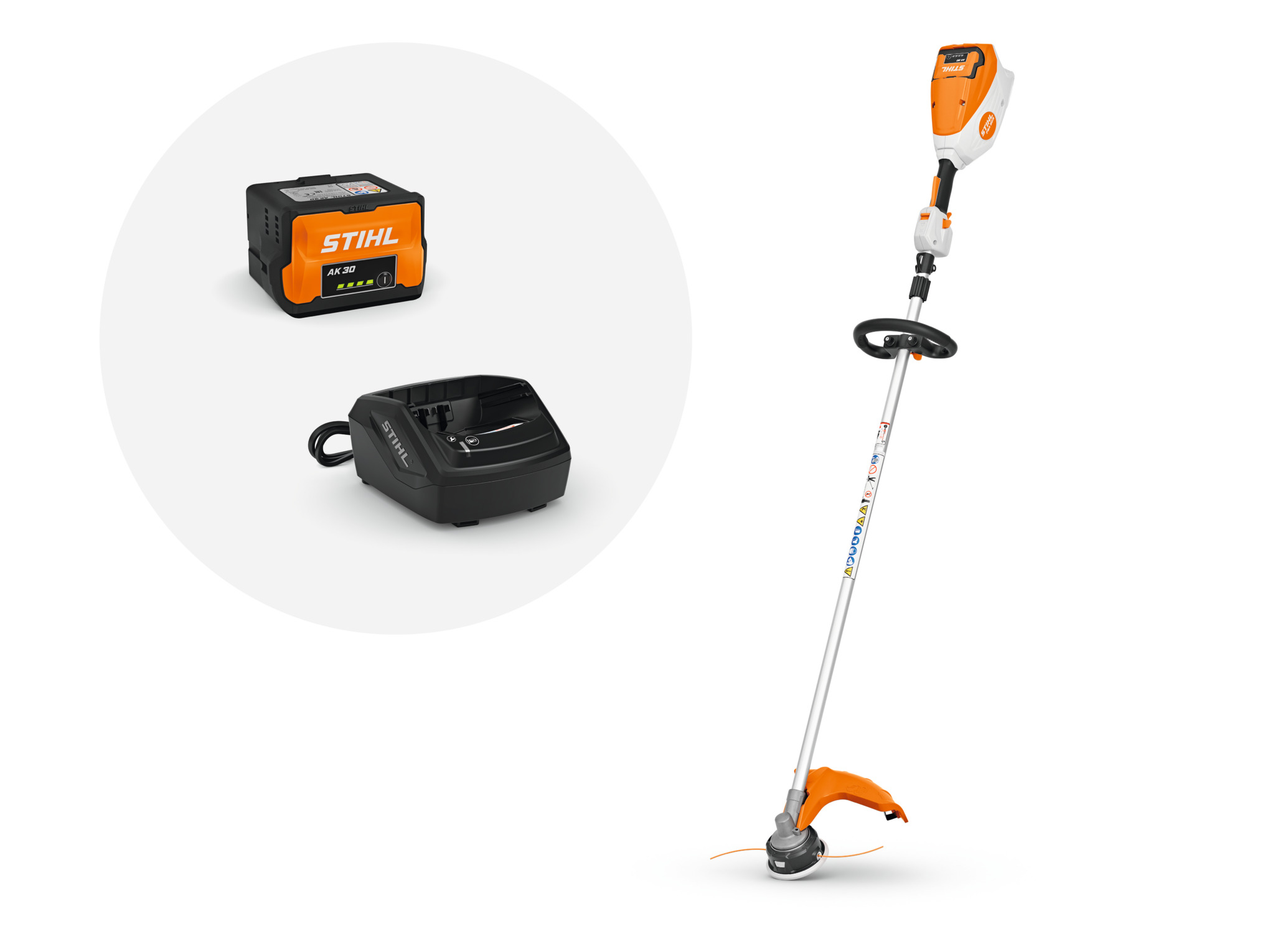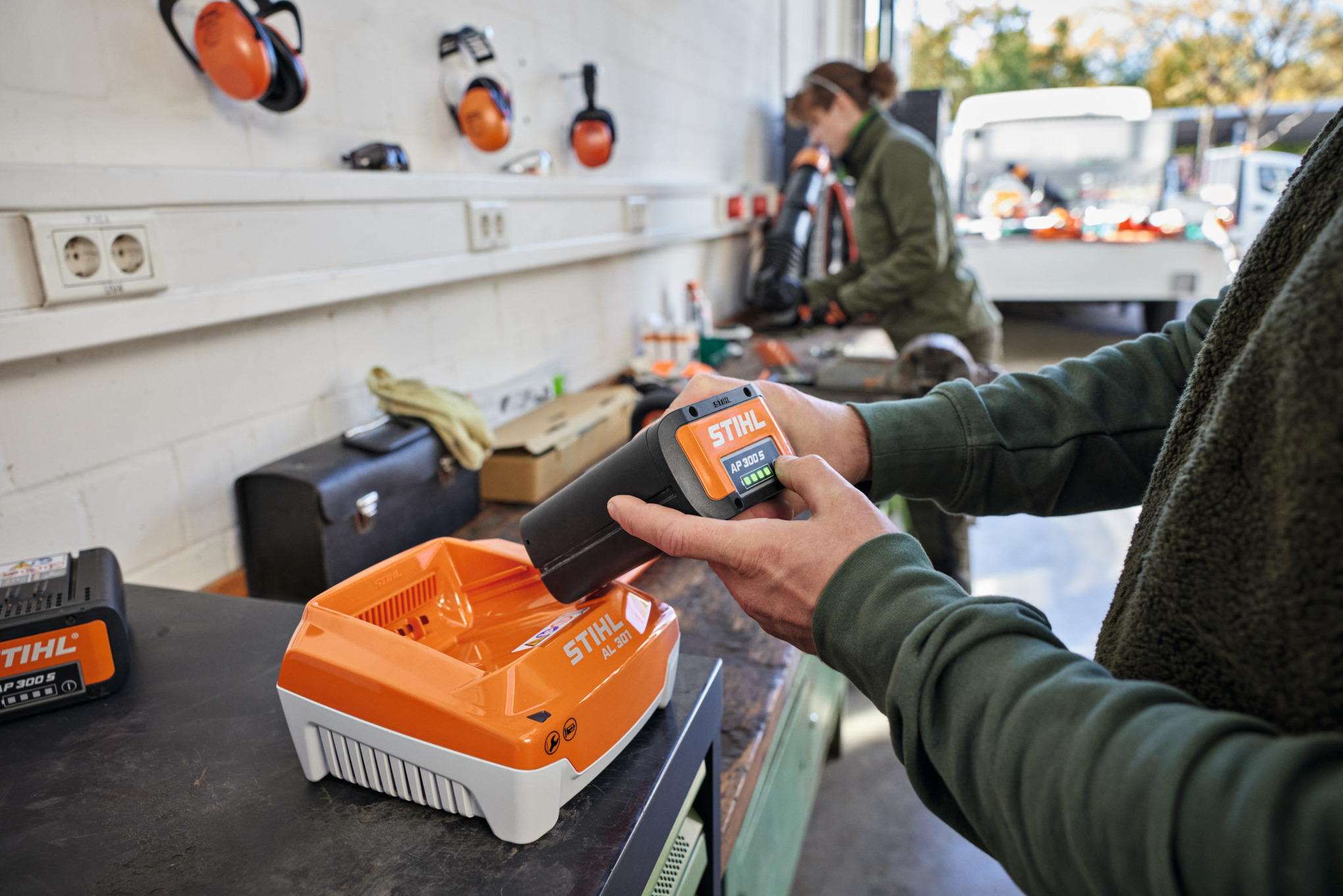Designing a small garden: tips for small spaces
Smaller gardens can still pack a punch, and there are a number of ways to make them look larger and more interesting. Read on for some small garden inspiration.
04.06.2025

Overview: Designing small gardens
Small gardens appear larger when space and perspective are shaped with the help of lines of sight such as curved paths, plants and sculptures.
The right choice of colours, such as a combination of white, blue and pink or yellow, is crucial.
Blur the boundary between your garden and neighbouring gardens to give the illusion of more space.
Less is more: avoid sharp contrasts and gaudy mixes when designing a small garden.
Small, handy, manoeuvrable tools such as the AS System of battery-powered tools, are ideal for small gardens.
Columnar trees such as the columnar beech, columnar hornbeam, columnar flowering cherry, the Norway maple, and the Indian bean tree are slender and column-like and suit small gardens.
Solitary plants such as a lone bush or perennials such as astilbe, Japanese anemone or sneezewood are ideal for a small garden, as are low–growing grasses such as striated reed grass, fine miscanthus or golden flax.
Don't be afraid to play around with optics – create high and low features and add intimacy and space. Divide and structure your space sensibly and choose the right plants and colours to create your small garden.
Good planning is half the work
Planning and designing a small garden is all about utilising space and visually expanding the garden. After all, you don't need a lot of space for a tasteful design: proper division of the area and a good choice of plants and colours will have a significant impact on the appearance of your garden.
Small garden – big impact
Whether your garden is square, rectangular, oval or round, there are solutions for every shape. The art of creating space and perspective makes a small garden appear larger.
First ask yourself how you would like to use your garden. Do you want an oasis of calm or a kitchen garden? Do you want to integrate a children’s play area, or do you dream of a small romantic garden with a variety of different seats?
Structuring a small garden
You should design your small garden in a varied and exciting way so you can't immediately see what is hidden behind a half-height hedge or a group of tall perennials. Even small green spaces seem more interesting if they do not reveal their secrets to the visitor at first glance. Try to provide visitors with an opportunity to explore.
Rectangular gardens generally appear smaller, so create round or oval areas, lawns and seats in them. This creates an impression of space and means it is not immediately apparent where the garden ends.

Create individual areas and oases. These could be a covered or enclosed seating area, a relaxation area with a garden lounger, a vegetable patch or a play area for children. The various areas can be separated by tall grasses, a small hedge, a half–height wall, a trellis or perennial beds.
Partitioning walls and fences covered in plants create a feeling of space, as they do not give an immediate idea of what is behind them. This also applies to half-height perennials that grow into the garden like a peninsula.
Privacy screening also plays a major role in the design of small gardens. Plant your garden with a well-spaced variety of shrubs to add interest. Mixed hedges are often the better choice in small gardens.
How to make your small garden appear bigger
Are you wondering how to make your small garden appear larger? How do you create more structure and accentuate the main features? Here are a few tips:

A sunken garden creates different levels
By creating several levels in a small garden, you can add excitement and variety.
A sunken garden is usually a square or rectangular cut-out section within your garden with a few steps leading down to it. It could be surrounded by natural stone with a small pond, a seat or a flower bed at its centre.
The different heights generate space and an expansive feel that brings small gardens to life.
An alternative to the sunken garden is raised areas with dry stone walls. These form banks that create interest and bring structure to small gardens.

Designing a small garden: making the most of your neighbour's garden
Incorporate neighbouring gardens by leaving lines of sight and views of attractive trees unobstructed. Your flower bed can flow seamlessly into your neighbour’s hedge.
Choose similar shrubs to your neighbour so that your two gardens merge into one where they meet. This creates the illusion of more space.
Using evergreens such as yew or box around your garden's borders will help you to merge the boundaries to neighbouring gardens.
Our tip: A good third of the plants you use should be evergreen, as this will also provide variety in winter.
Paths in a small garden create depth
Creating a path that is narrower towards the back makes the distance look further. Set up a large, attractive arch or trellis at the start of the path to distract from its size and convey an impression of space and distance. You could also place a striking feature at the end of a path: sculptures, a solitary flowering bush, a corner seat, or a small pond.

In long, narrow gardens, curved paths work better than straight lines. These could run along a perennial bed, or alternatively, you could plant hedge sections to break up the long expanse. If the garden is wider and shorter, go for a diagonal or curved path running at an angle to the house instead.
Stick with one material such as wood or stone so that the space doesn't appear untidy. A stone patio or a path should consist of a maximum of two stone materials.
Which plants to use?
Which plants are suitable for small gardens? A few ideas:
Which colours are best for small gardens?
A few tips on how to skilfully use colour in small gardens:

Blue creates space. Blue tones add depth to the garden. To make your small garden seem larger, plant blue plants or flower beds towards the back if it does not directly adjoin onto a neighbouring garden. This means that the end of the property will blend into the horizon as a background, giving an impression of space.

The combination of white, blue and pink always works very well, as does a mix of white flowers and any pastel colour, because light and cool shades are noticeable from a distance.

Yellow is a friendly colour and brightens up dark corners. However, it is better to only use it selectively, otherwise it could make your garden look smaller again.
Less is more: Avoid sharp contrasts and gaudy mixes, which can look untidy and make gardens seem smaller.
You should also avoid the extensive use of signal colours and dark shades, as these can make small gardens appear even smaller. Red, in particular, tends to force its way into the foreground and dominate.
Ideas and inspiration
Here are some ideas of different styles to make smaller gardens shine.
Small romantic garden: Soft pink and white climbing roses are ideal here, along with ornate trellises and rose arches to mark the start of pathways. Scatter tubs containing the same type of plants throughout the space to create your small romantic garden – not too many at once, though, otherwise the garden may appear fragmented.
Contemporary small garden: If you like simplicity, clean geometric lines and shapes, as well as warm wood tones, add elegance to a small contemporary garden. Using stylish elements made of high-quality materials, such as seats and chairs on a gravel bed or wooden deck, will expand your home interior and create a second living room outside. This works particularly well if you design your garden and home in the same style. A round seating area will make the space look bigger overall.
Atmospheric light in a small garden: Several small lights form atmospheric pools of light, and the accented lighting of a plant or path will create additional lines of sight. Solar lamps along the beds collect solar energy during the day, then shine long into the night, and create visual structure and order. Wooden lanterns or lamps also radiate a particularly warm light, and just like many items of wooden furniture, you can easily make them yourself.
Designing a small kitchen garden: If you plan to design a small herb garden or a vegetable garden, it's best to arrange several raised beds symmetrically as this gives more structure. A raised bed is ideal for small gardens and is also a popular design element in contemporary garden design.
A babbling water feature or mini pond with a water feature has a calming, relaxing effect and makes the space appear larger, as the sky and surroundings are reflected in the surface. Here too, you can use height to great effect by placing a mini pond in a barrel, even in the smallest garden. A stream running through a small garden is also a great idea, but this only works on slopes. If you design a watering hole for animals in your small garden, you’ll supply both small and larger creatures with water.

Planning and creating a garden
Creating a garden requires careful planning. Different types of gardens and plants have different needs throughout the year. Our guides provide useful tips for home gardeners who want to make the most of their garden space.
Power tools for the small garden
Cordless power tools are particularly well-suited to garden design in small gardens. They operate quietly and don’t need to be plugged in, so they are sustainable and protect the ears of both humans and animals. Electric models are also very quiet and environmentally friendly. Power tools for small gardens should be handy, small, light and manoeuvrable like our AS System of battery-powered tools.













